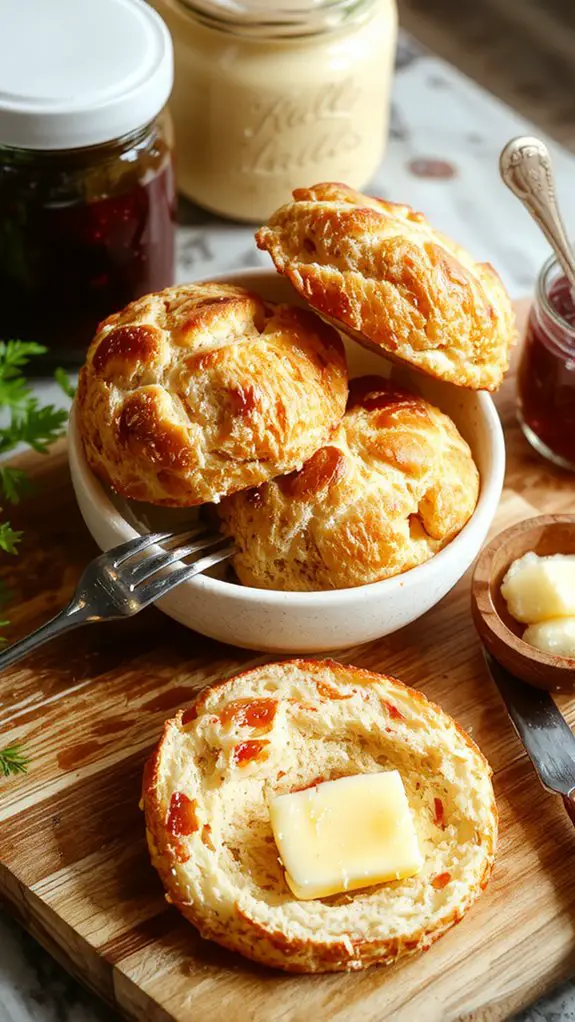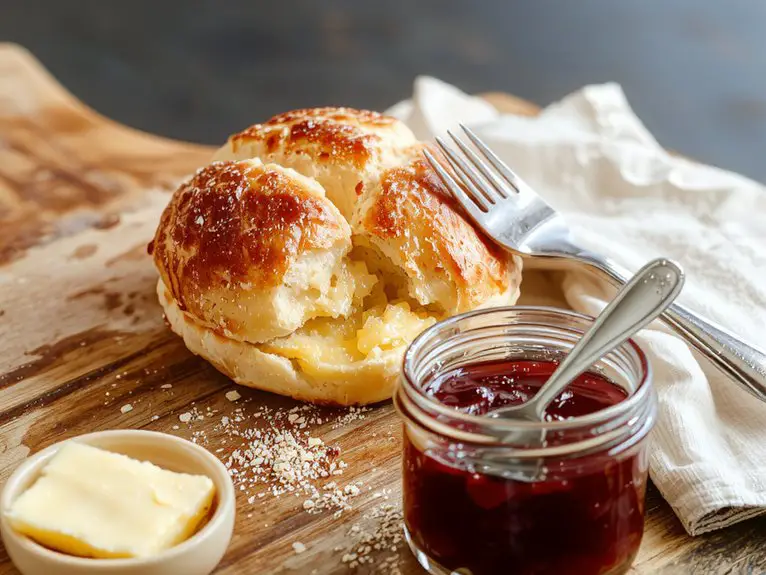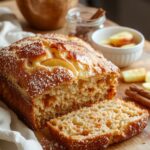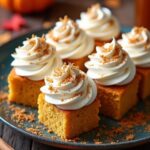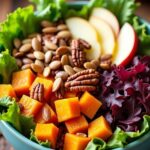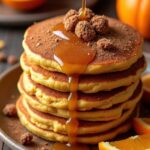I’ve tried countless english muffin recipes, but the perfect one eluded me until I figured out the right balance of ingredients and technique. It’s not just about getting those iconic nooks and crannies—it’s about flavor, texture, and consistency. The process seems simple, but a few key steps make all the difference. If you’re looking to elevate your morning toast or weekend brunch, this recipe might just be what you’ve been missing.
Recipe
This homemade English muffin recipe is the absolute game-changer you’ve been waiting for—trust me, once you taste these, you’ll never go back to store-bought. What makes them special? It’s all about the nooks and crannies. Those little pockets are *chef’s kiss* perfect for soaking up butter, jam, or your favorite egg sandwich toppings.
The secret? A simple dough enriched with milk and a touch of honey, cooked on a griddle for that signature crust and tender crumb. I’ve been making these for years, and they’re always a hit—whether it’s a lazy weekend breakfast or a quick grab-and-go snack.
Plus, the smell of them cooking? Heavenly. You’ll feel like a master baker, and honestly, you should—because these muffins are *that* good. Let’s get to it!
Ingredients
When it comes to making English muffins from scratch, the quality of your ingredients can make or break the final result. Opt for fresh, high-quality components to guarantee your muffins have that signature nooks-and-crannies texture and a rich, toasty flavor. Here’s what you’ll need, along with some insider tips to help you nail this recipe:
- Bread flour – The higher protein content is essential for creating the perfect chew and structure. All-purpose flour can work in a pinch, but bread flour is worth it.
- Whole milk – Adds richness and tenderness to the dough. If you’re out of milk, a mix of half-and-half and water can substitute.
- Unsalted butter – Provides moisture and flavor. Make sure it’s softened to room temperature for easier mixing.
- Active dry yeast – The key to that airy, honeycomb texture. Check the expiration date to confirm it’s fresh and active.
- Sugar – Just a touch to feed the yeast and balance the flavor. Honey or maple syrup can be used as alternatives.
- Salt – Enhances all the flavors. Don’t skip it—this is a non-negotiable.
- Cornmeal – For dusting the baking surface; it prevents sticking and gives the muffins that classic gritty exterior. Don’t substitute this—it’s a must!
- Optional: Egg wash – Brushing the tops with a beaten egg before cooking adds a beautiful golden color. Milk or cream can be used as a lighter alternative.
How to Make the Best Perfect English Muffin Method
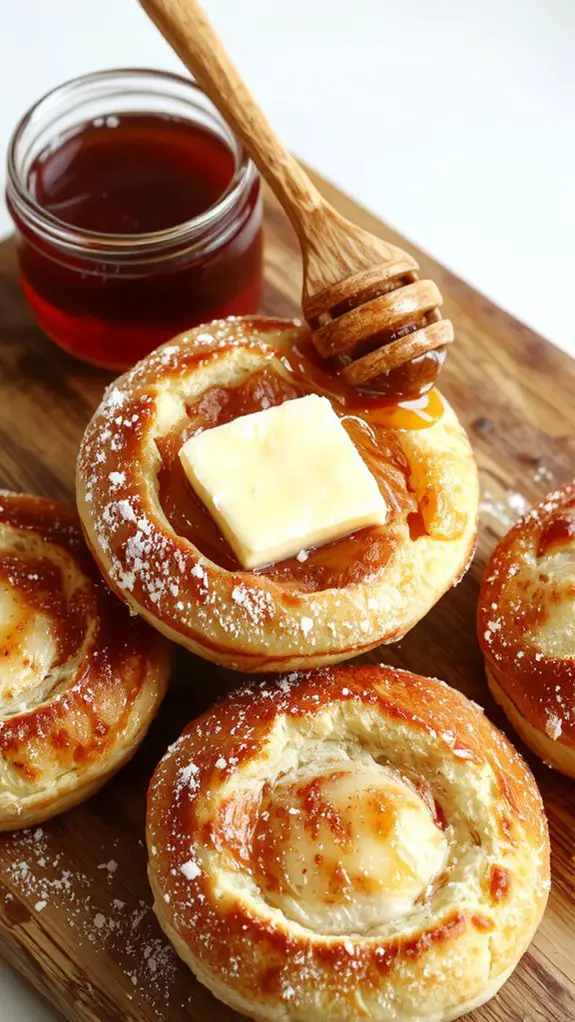
1. Prepare the Dough
Combine warm water, milk, sugar, and yeast in a bowl. Let it sit for 5-10 minutes until frothy.
In a separate bowl, mix flour, salt, and butter. Gradually add the yeast mixture to the dry ingredients, stirring until a dough forms. Knead on a floured surface for 8-10 minutes until smooth and elastic.
- Pro Tip: Use a stand mixer with a dough hook if available to save time and effort.
- Watch Out: Don’t skip the frothy yeast step—it guarantees your dough will rise properly.
2. First Rise
Place the dough in a greased bowl, cover with a damp cloth, and let it rise in a warm place for 1-2 hours, or until doubled in size.
- Visual Cue: The dough should spring back slowly when poked with a finger.
- Flexibility: If you’re short on time, let it rise in the fridge overnight for a slower, deeper flavor.
3. Shape the Muffins
Punch down the dough and roll it out to about ½-inch thickness. Use a round cutter (3-4 inches) to cut out circles. Place them on a parchment-lined baking sheet sprinkled with cornmeal.
- Pro Tip: Re-roll dough scraps to maximize yield, but handle gently to avoid overworking.
- Watch Out: Don’t make the dough too thin, or the muffins won’t have that signature nooks and crannies texture.
4. Second Rise
Cover the shaped muffins with a damp cloth and let them rise for another 30 minutes.
– Visual Cue: They should look puffy but not doubled in size.
5. Cook the Muffins
Heat a skillet or griddle over medium-low heat. Lightly grease it and cook the muffins for 5-7 minutes per side, until golden brown and cooked through.
- Pro Tip: Use a cast-iron skillet for even heat distribution.
- Watch Out: Keep the heat low to avoid burning the outside while the inside remains undercooked.
6. Cool and Split
Let the muffins cool on a wire rack for 10-15 minutes. Split them with a fork for that classic English muffin texture.
- Why Behind the Step: Using a fork creates the nooks and crannies that are perfect for holding butter and jam.
- Flexibility: Store leftovers in an airtight container for up to 3 days or freeze for later use.
7. Toast and Enjoy
Toast the muffins until lightly golden and crisp. Serve with your favorite toppings—butter, jam, or even eggs and bacon for a hearty breakfast.
– Pro Tip: For extra flavor, try grilling the muffins instead of toasting.
Nutrition
This homemade English muffin recipe is not only delicious but also nutritious. Here’s the nutritional breakdown per serving:
| Calories | Protein | Fat | Carbohydrates | Fiber |
|---|---|---|---|---|
| 150 | 5g | 2g | 28g | 2g |
Chef Tips
While making homemade English muffins can seem intimidating, I’ve found a few tricks to simplify the process and guarantee great results.
Use a stand mixer with a dough hook for even kneading. Let the dough rise in a warm spot to make certain it doubles in size.
Cook the muffins on a griddle over medium-low heat to avoid burning. Split them with a fork for those signature nooks and crannies.

